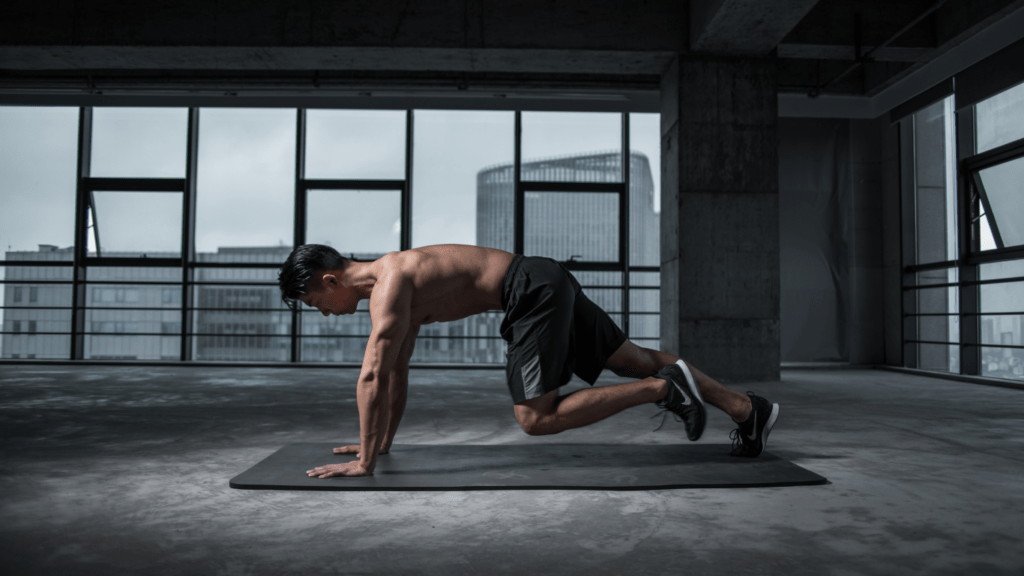Importance of Fitness for Athletes
Fitness is crucial for athletes to achieve peak performance and stay competitive. Both physical and mental health are significantly impacted by consistent training and a healthy lifestyle.
Physical Health Benefits
Athletes gain numerous physical health benefits from regular fitness routines. Improved cardiovascular health, for example, leads to better stamina during competitions. Strength training, with exercises like deadlifts and squats, enhances muscle power and reduces injury risk. Flexibility exercises, such as yoga and stretching, improve range of motion and coordination. Meticulous attention to physical health ensures athletes perform at their best.
Mental Health Benefits
Fitness also provides substantial mental health benefits. Regular exercise releases endorphins, which combat stress and elevate mood. Athletes, facing the pressures of competition, find that mental clarity and focus improve with consistent workout routines. Engaging in fitness activities, from team sports to individual exercises, helps build resilience and discipline, essential qualities for professional athletes. By prioritizing their mental well-being, athletes maintain the focus and drive needed for success.
Training Regimens of Top Athletes
Professional athletes follow highly structured training regimens to achieve peak performance. Their routines typically include strength training, cardio workouts, and flexibility exercises.
Strength Training
Athletes prioritize strength training to enhance muscle power and endurance. Examples include weightlifting, resistance exercises, and bodyweight movements. They follow programs like periodization, where they cycle through different phases to avoid plateaus. Compound movements like squats, deadlifts, and bench presses are staples in their routines. According to the National Strength and Conditioning Association, these exercises are pivotal for building overall strength and muscle mass (NSCA, 2021).
Cardio Workouts
Cardio workouts improve athletes’ cardiovascular health and stamina. Examples include running, cycling, and rowing. High-intensity interval training (HIIT) is a popular choice among professionals. It involves short bursts of intense exercise followed by rest or low-intensity periods. A study by the American College of Sports Medicine found that HIIT boosts cardiovascular health and metabolic rate effectively (ACSM, 2020). Athletes also often incorporate long-distance cardio sessions to build endurance.
Flexibility and Mobility Exercises
Flexibility and mobility exercises are crucial for preventing injuries and improving athletic performance. Examples include yoga, dynamic stretching, and foam rolling. Athletes use these exercises to maintain a full range of motion in their joints and muscles. According to the International Journal of Sports Physical Therapy, flexibility exercises reduce injury risk and enhance muscular function (IJSPT, 2019). Professional athletes typically integrate these exercises into their daily routines to ensure optimal performance and longevity in their careers.
Nutritional Tips from Professionals
Adopting the right nutrition strategies can significantly boost athletic performance. These nutritional insights from professional athletes can help optimize pre- and post-workout routines for maximum results.
Pre-Workout Nutrition
Proper fueling before a workout is crucial. Professional athletes typically consume a balanced meal 2-3 hours before exercise. This meal combines carbohydrates, proteins, and healthy fats.
For example, they might eat whole grain toast with peanut butter and banana slices. Around 30-60 minutes before the workout, they often have a small snack rich in simple carbs, such as an apple or a nutrition bar. This ensures they have quick energy without causing digestive discomfort.
Post-Workout Recovery Foods
Post-workout nutrition focuses on recovery. Consuming a mix of protein and carbohydrates within 30 minutes post-exercise is recommended by many athletes.
They might have a protein shake blended with fruit, which provides the necessary nutrients for muscle repair and glycogen replenishment. Some athletes prefer whole foods like grilled chicken with sweet potatoes. This Nutrient timing helps improve muscle recovery and growth.
Hydration Strategies

- Hydration is key to sustaining performance.
- Athletes generally drink water consistently throughout the day, not just during workouts.
- They often monitor their hydration levels by checking the color of their urine.
- Darker urine indicates dehydration.
- During intense exercise, they may use electrolyte solutions to replenish lost salts and prevent cramps.
- Coconut water or an electrolyte drink like Gatorade can be beneficial, especially for prolonged workouts.
Injury Prevention and Recovery
Professional athletes know injury prevention and recovery are key to maintaining peak performance. They use specific techniques and strategies to minimize injury risks and optimize recovery.
Common Injuries Among Athletes
Athletes often face injuries due to rigorous training. Common injuries include:
- Sprains: Ligament injuries, especially in ankles and wrists.
- Strains: Muscle or tendon injuries from overstretching.
- Tendonitis: Inflammation of tendons, frequently in shoulders or elbows.
- Stress Fractures: Small bone cracks, often in legs or feet.
- Dislocations: Bone displacement from joints, common in shoulders.
Understanding these injuries helps in adopting preventive measures.
Effective Recovery Techniques
Athletes prioritize effective recovery techniques. Key methods include:
- Rest: Essential for healing and reducing inflammation.
- Ice Therapy: Reduces swelling and pain post-injury.
- Compression: Minimizes swelling and provides support.
- Elevation: Alleviates swelling by reducing blood flow to the injured area.
- Physical Therapy: Customized exercises and treatments to restore function and strength.
These techniques ensure faster and safer recoveries.
Long-Term Injury Prevention Strategies
Long-term strategies are crucial for sustaining athletic careers. Effective methods include:
- Strength Training: Builds muscle endurance and supports joints.
- Flexibility Exercises: Enhance range of motion and reduce strain risks.
- Proper Warm-ups and Cool-downs: Prepare the body for activity and aid in recovery.
- Balanced Nutrition: Supports muscle repair and reduces susceptibility to injuries.
- Adequate Sleep: Facilitates tissue repair and overall recovery.
Implementing these strategies helps in sustaining performance and reducing injuries over time.
Mental Tricks for Staying Motivated
Pro athletes aren’t just physically strong, they’re mentally resilient. Key mental tricks keep them driven and focused on their goals.
Goal Setting
Setting clear goals is crucial. I recommend athletes use the SMART framework—Specific, Measurable, Achievable, Relevant, and Time-bound. For example, instead of “get faster,” aim for “reduce 5k time by 2 minutes in 3 months.” Break long-term goals into short-term targets to stay motivated. Write goals down to visualize progress and accountability.
Visualization Techniques
Top athletes often use visualization. Mental imagery helps embed success in the subconscious. For instance, before a race, imagine crossing the finish line first, feeling the wind, and hearing the crowd. Regular visualization develops mental readiness. Create detailed visual scenarios of success for practice sessions and competitions.
Overcoming Plateaus
Plateaus can be demotivating. To overcome them, vary training routines. Introduce new exercises, modify intensities, or try different workout environments. Set mini-goals to track progress and celebrate small victories. Maintain a positive outlook to fend off discouragement and sustain motivation.


 David Boyd brought valuable insights to News Flip Network, contributing his knowledge in business and technology. His work on streamlining the site’s interface and optimizing backend processes ensured that the platform operates efficiently. Boyd's efforts in integrating advanced tools and managing technical aspects played a significant role in the site's reliable and timely news delivery.
David Boyd brought valuable insights to News Flip Network, contributing his knowledge in business and technology. His work on streamlining the site’s interface and optimizing backend processes ensured that the platform operates efficiently. Boyd's efforts in integrating advanced tools and managing technical aspects played a significant role in the site's reliable and timely news delivery.